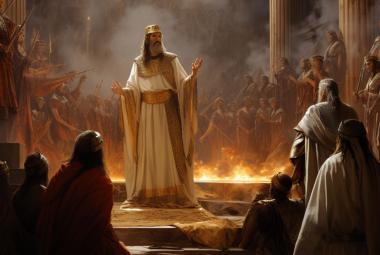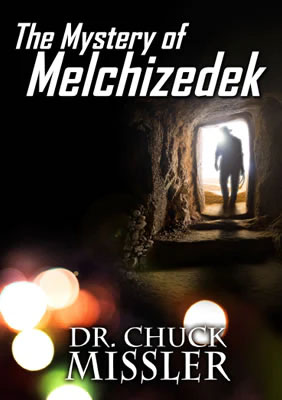In Genesis 14, after the Battle of the Nine Kings, Abram encounters a fabulous paersonage who was both king and priest. Who is Melchizedek?
Recently Bob Cornuke asked me to join him in Israel to do some research for his book, Temple, and so Ron Matsen and Louis Powell joined me to go exploring under the City of David (“Zion”). We were guests of Eli Shukron from the Israeli Antiquities Authority.
While there we found a stele (see photo, below) that potentially could eclipse anything else we might have found: it may have been erected by Melchizedek himself!
A stele is a slab, usually oblong, not forming part of a structure but set up in a vertical position, for votive purposes or as a memorial to some person or event. (“Votive”: offered, given, undertaken, or performed or dedicated in fulfillment of, or in accordance with, a vow.)
We may have encountered a vastly more significant discovery than anything we could have imagined!
The Mystery of Melchizedek
In Genesis 14, after returning from his remarkable victory following the Battle of the Nine Kings,[1] Abram (later, Abraham) encountered this fabulous personage who was both king and priest of Salem (Jerusalem).[2]
Astonishingly, we note that Abram gave him tithes, and he, in turn, administered bread and wine to Abram! Who is he? And why does he receive tithes? The theme of the bread and wine also finds its echo throughout the Scriptures, climaxing with the Lord’s Supper.[3]
Paul insists that this was also prophetic: “For as often as ye eat this bread, and drink this cup, ye do shew the Lord’s death till he come.”[4]
Was the Melchizedek administration also prophetic? These few verses in Genesis 14 might have dimmed into obscurity except that they are echoed in Psalm 110, one of the most quoted Psalms in the New Testament[5] and which underscores a sworn oath of God Himself: “The LORD hath sworn, and will not repent, Thou art a priest for ever after the order of Melchizedek.”[6]
The distinctives of this king and priest then become the focus of three chapters in the Epistle to the Hebrews: chapters 5, 6, and 7. These distinctives literally supersede the previous separation of the kingship and priesthood, which are enforced throughout the Old Testament! (Many of the speculations about this mysterious personage known as “Melchizedek” are punctured by Hebrews 7.)
This topic further climaxes at the very Throne of God in Revelation Chapter 5 when the Redeemed identify themselves (uniquely) as both “kings and priests.”
Another Subset within a Larger Reality?
It almost appears that the entire Jewish experience—from the call of Abraham to the Second Coming of the Messiah—is but a kind of parenthesis within an even larger reality yet to be revealed!
I can’t help being reminded of our previous articles on the “boundaries of our physical reality,” in which we noted that both the Macrocosm (things larger than man) and the Microcosm (things smaller than man) are finite, and that our “reality” is but a virtual digital simulation—which is but a subset of a yet larger reality, referred to as the “Metacosm.”[7]
What a fabulous God we serve! His wonders never cease.
This topic is explored in more detail in our new briefing on The Mystery of Melchizedek.
Notes:
- Genesis 14:11–24. ↩
- Psalm 76:2; early mention in the Tell el-Armarna Letters (14th cent. BC), and Assyrian inscription long before it became an Israelite city; also The Targumim, and Genesis Apocryphon document the early identification of Salem as Jerusalem. ↩
- Genesis 40:5–23; Matthew 26:26–29. ↩
- 1 Corinthians 11:26. ↩
- Psalm 110 is quoted over 25 times in the New Testament; v.4, 4 times. ↩
- Psalm 110:4. ↩
- Cf. Scientific American, June 2005, “Inconstant Constants.” ↩







